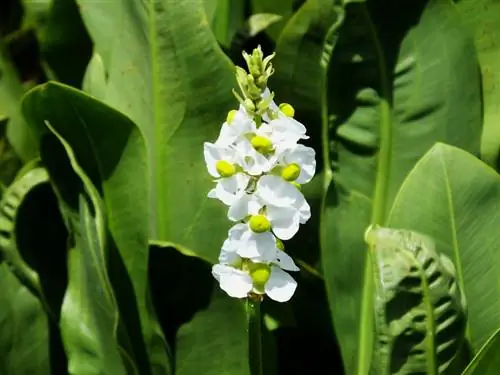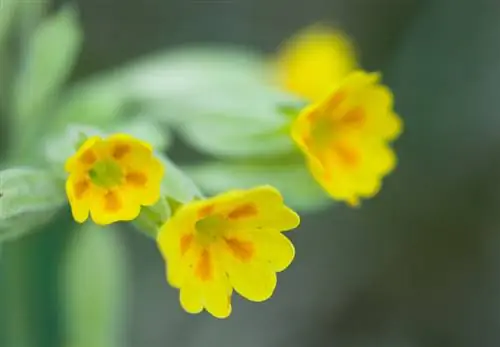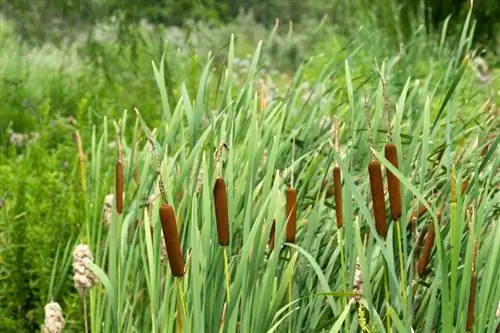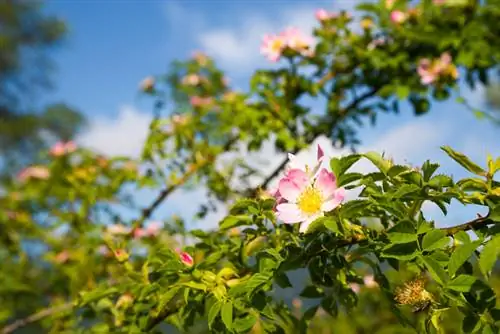- Author admin [email protected].
- Public 2023-12-16 16:46.
- Last modified 2025-06-01 06:02.
The approximately 40 species of the genus Arrowwort belong to the family of the frogspoon family, as does the related genus the frogspoon family. They are all marsh and aquatic plants that are also suitable for planting in garden ponds.
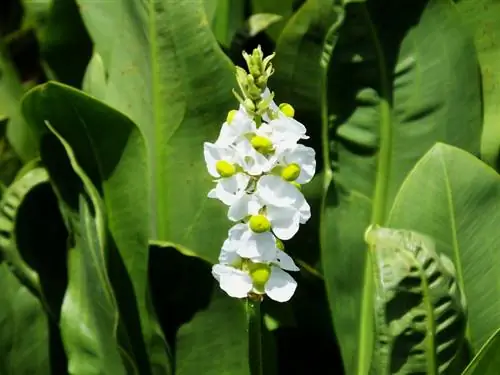
What's special about arrowhead?
Arrowwort is an easy-care, hardy aquatic plant from the frogwort family. It prefers sunny, muddy locations and sometimes forms edible tubers that taste similar to potatoes. The plant has small flowers and is known as a compass plant due to its leaf shape.
Edible species of arrowhead
Some species of arrowhead produce edible tubers. The usable species include, for example, Sagittaria graminea and Sagittaria cuneata, but especially Sagittaria sagittifolia. In some Asian stores you can get arrowhead tubers that you can boil or roast. They taste similar to potatoes and can also be processed into flour when dried.
Planting arrowweed
The subtropical species of arrowhead are particularly suitable for planting in aquariums. If you are looking for a plant for your garden pond, then take the common arrowhead, for example. It is native to temperate climate zones and is ideal as underplanting for ponds.
It is best to place the arrowweed in plant baskets (€1.00 on Amazon). This makes the garden pond easy to maintain and clean if necessary. The ideal place is with 20 - 30 cm of water depth and in full sun. The tips of the arrow-shaped leaves always point north. No wonder that the arrowhead is also called the compass plant.
Caring for Arrowhead
The arrowhead is quite easy to care for if it is in the right place. The bottom should above all be muddy, ideally in shallow water up to 30 cm deep. Then the plant retreats below the water surface in winter and practically hibernates as a rhizome and/or tuber.
The arrowhead begins to bloom in June. The flowers are delicate and decorative, but quite small. Arrowhead is usually planted because of its impressive leaves, which vary greatly depending on the variety. Often the name itself suggests the shape of the leaves, such as the grass-leaved arrowhead, which forms edible tubers and is nicknamed “duck potato”.
The most important things in brief:
- easy care
- mostly hardy
- loves sun and muddy locations
- so-called compass plant
- edible tubers taste similar to potatoes
- small flowers
Tip
The grass-leaved arrowhead (Sagittaria graminea) is nicknamed “duck potato” because of its edible tubers. It is also cultivated here as a pond plant.

